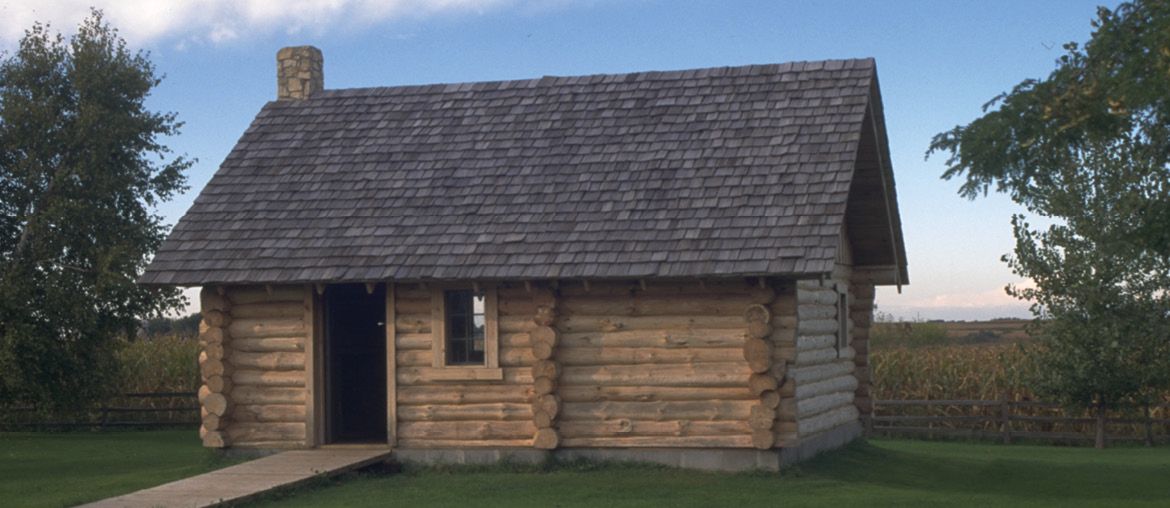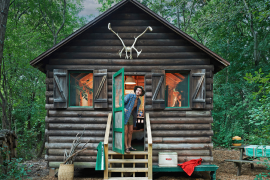Photo © Don Davenport/Travel Wisconsin
Long before trumped-up reality TV shows, we had “Little House on the Prairie,” the gentle drama about a pioneer family’s ongoing struggles and triumphs. Production of the popular television series ended in 1983, after a nine-year run, but the legacy of the woman who made these stories possible remains very much alive.
Laura Ingalls Wilder based much of her writing on her own family’s hardships, hopes and heartfelt challenges during frontier living. She survived a bout of diphtheria, buried a child 12 days after birth, lost a home to fire and moved often during childhood as her adventurous parents sought a less harsh place to call home.
What began as diary writing turned into short stories about pioneer life, then a dozen books for children, translated into at least 40 languages. This work began in earnest only after the resilient woman and her husband were able to make a down payment on a 40-acre farm with $100 saved from her work as a seamstress.
“It is still best to be honest and truthful; to make the most of what we have; to be happy with simple pleasures, and to be cheerful and have courage when things go wrong,” she wrote at age 80, in a letter to children. That brave and optimistic spirit prevails in her stories.
At least six states claim this award-winning author as their own. Kansas, Minnesota, Iowa and South Dakota have preserved homes of her youth and adulthood. Missouri maintains Rocky Ridge Farm, where her best-known books were written.
Wisconsin is home to an important part of “America’s Favorite Pioneer Girl,” too. Laura Ingalls Wilder was born in 1867 in a simple log cabin surrounded by wooded bluffs, seven miles north of Pepin, and lived there two years, until her family moved to Kansas. They were back in Pepin by 1871, then on to Minnesota three years later.
The once-wooded Wisconsin homestead is next to farmland today, and on a three-acre memorial is a re-created Ingalls cabin, called Little House Wayside. In the vicinity are Amish families, whose no-frills lifestyle and work with teams of horses harken back to pioneer days.
Pepin, population 7,500 and on Highway 35 (part of the Great River Road National Scenic Byway), is home to a historical museum whose artifacts recall the Ingalls’ era. An expansion of this former clothing store and auto shop was dedicated this year.
During the second full weekend of September, Laura Ingalls Wilder Days resurrect the pioneer way of life. Costumed craftsmen demonstrate blacksmithing and woodworking, in daylight and by candlelight. Square dancers promenade, swing and do-si-do.
Children compete in a spelling bee, shuck corn and tie on a bonnet for the Laura look-alike contest. Pie eating, tomahawk throwing and quilt showing events court adults. Carved wooden trophies go to winners of the Olde Tyme Fiddle Contest.
Much of this happens in or near Laura Ingalls Wilder Park.
The area — which includes Pepin Lake, a wide section of the Mississippi River – was the author’s inspiration for the 1932 “Little House in the Big Woods,” her first book.
Her birthplace is one of five stops on the Laura Ingalls Wilder Historic Highway, which recognizes her journeys and homes, modest dugout to two-story farmhouse.
She was nearly 70 years old when Harper Brothers in New York published “Little House on the Prairie,” a handwritten manuscript. Her books remain in print, through Harper Collins Children’s Books. Find details at littlehousebooks.com.
This article originally appeared in the 2014 fall/winter issue of Experience Wisconsin magazine. The contents of this article were checked for accuracy when it was published; however, it’s possible some of the information has changed. We recommend you call first if you have specific questions for the destinations, attractions or restaurants mentioned in this article.
No portion of this article or magazine may be reproduced without prior written permission by the publisher.






Comments are closed.